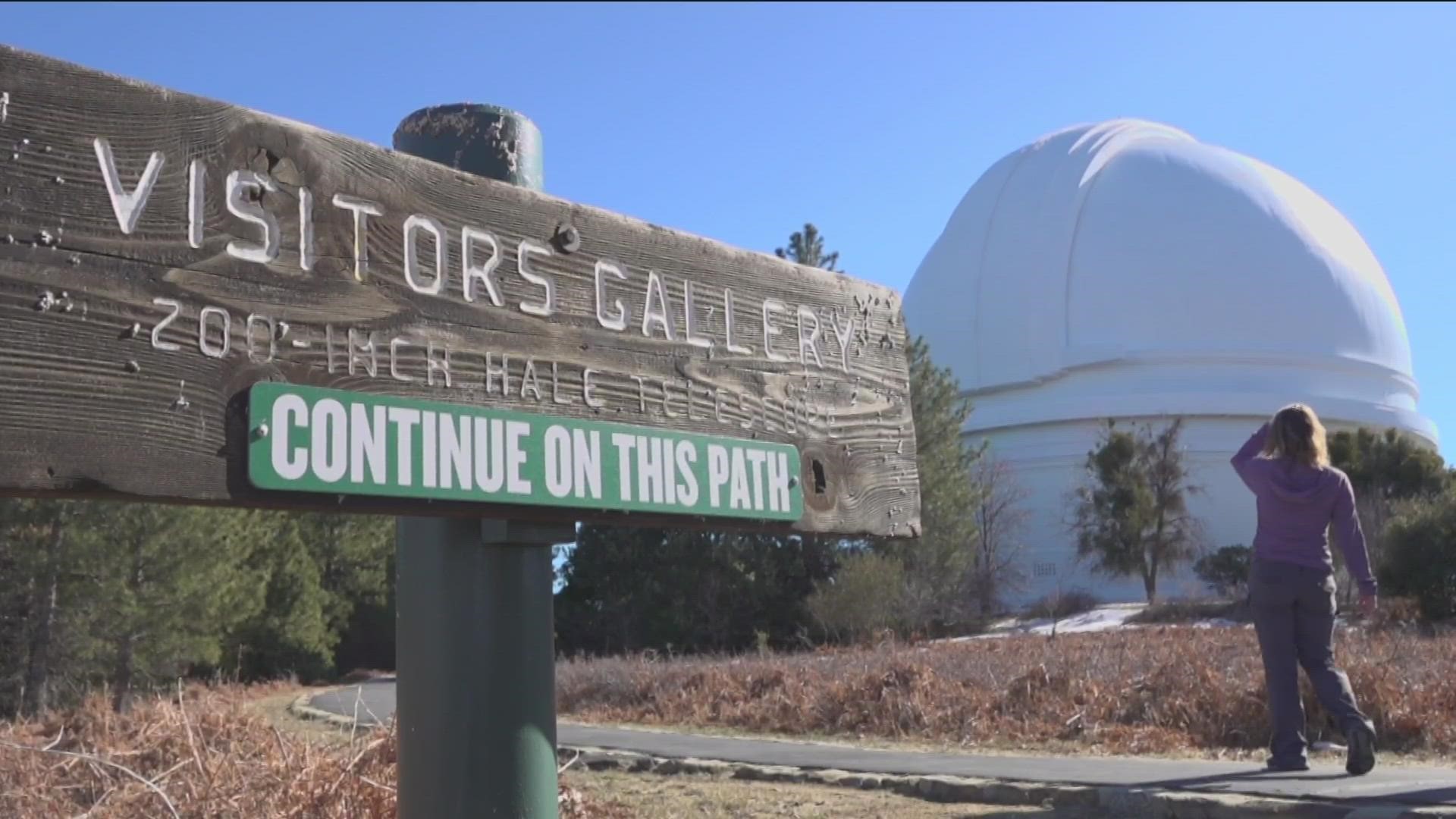PALOMAR MOUNTAIN, Calif — 2023 marks 75 years since the Palomar Observatory was first dedicated.
The San Diego County scientific marvel recently made headlines after the famous green comet was discovered by researchers there.
But what exactly goes on behind closed doors?
CBS 8 took a behind-the-scenes tour, receiving an inside look at the iconic San Diego County observatory.
The Observatory is located up windy roads, about 60 miles east of central San Diego and 5500 feet above sea level. It’s known as one of the most prestigious scientific facilities in the world.
Our tour guide for the day was Dr. Andy Boden, an astronomer, and administrator at the site, which was dedicated back in 1948.
"This year is our 75th anniversary. We're pretty excited," said Dr. Boden. Boden's knowledge about the Observatory coincides with his passion for it.
For him, the work here helps connect us with everything.
"It's that very intimate connection between the astrophysical processes out there that we study and how they connect to life on earth," said Boden.
The Observatory was the vision of Dr. George Ellery Hale, an astrophysicist. He helped develop the California Institute of Technology, Caltech, a private research university in Pasadena.
In 1928, they received a six-million-dollar grant from the Rockefeller Foundation to build the telescope and its dome.
"In 2020 now, that's about 90 million dollars," said Dr. Boden.
By 1939, Boden says, the building and telescope steel were in place.
But the remaining work halted during world war two over concerns the observatory could become a target.
When it finally did open in 1948, the telescope was the largest one on the planet.
"This is a 200-inch or five-meter aperture telescope. It is the Hale telescope."
Decades later, the telescope is still in use daily.
"On a nightly basis, we open the dome, and we collect starlight or light from stuff out in the sky with this telescope and two smaller telescopes," said Boden.
The telescopes capture pictures, which are then studied by astronomers using computers inside a separate room. Doing this taught them more about black holes, other galaxies, and cosmic expansion.
One of the most recent well-known discoveries was the green comet, which hadn't been seen for 50,000 years.
The Hale telescope is so sensitive surrounding communities have certain lights to help researchers do their best work.
"They use a special type of streetlight called a low-pressure sodium light, specifically designed to emit light in certain wavelengths that we know where to look and not try to do out measurements there," said Dr. Boden.
Something else worth noting-the temperature inside the dome is cold.
The day CBS 8 visited was set to 38 degrees to help researchers do their best work.
"So, we keep the telescope in the dome at the outside nighttime temperature, so there's not a big thermal shock, there's not a big temperature change between the inside and the outside air when we open the dome," said Dr. Boden.
It's a 24-hour operation. This means several researchers call the Palomar Observatory home, literally.
There are 13 cottages scattered across 2,000 acres of land, where half of the full-time staff live.
As for the public, you can visit for free and view the telescope from an enclosed area. There's also a visitor center showcasing its history and the inner workings of space.
Funding for the Observatory is provided by Caltech, as well as partnerships with other research institutions.
A true scientific marvel right here in San Diego.
To celebrate 75 years, plans are underway to hold a public event sometime in the spring or summer.
In the meantime, if you'd like to visit, the Observatory is open daily from 9 a.m. until 3:30 p.m. Private tours have not resumed since the pandemic.
WATCH RELATED: News 8 Throwback from Palomar Observatory in 1994

